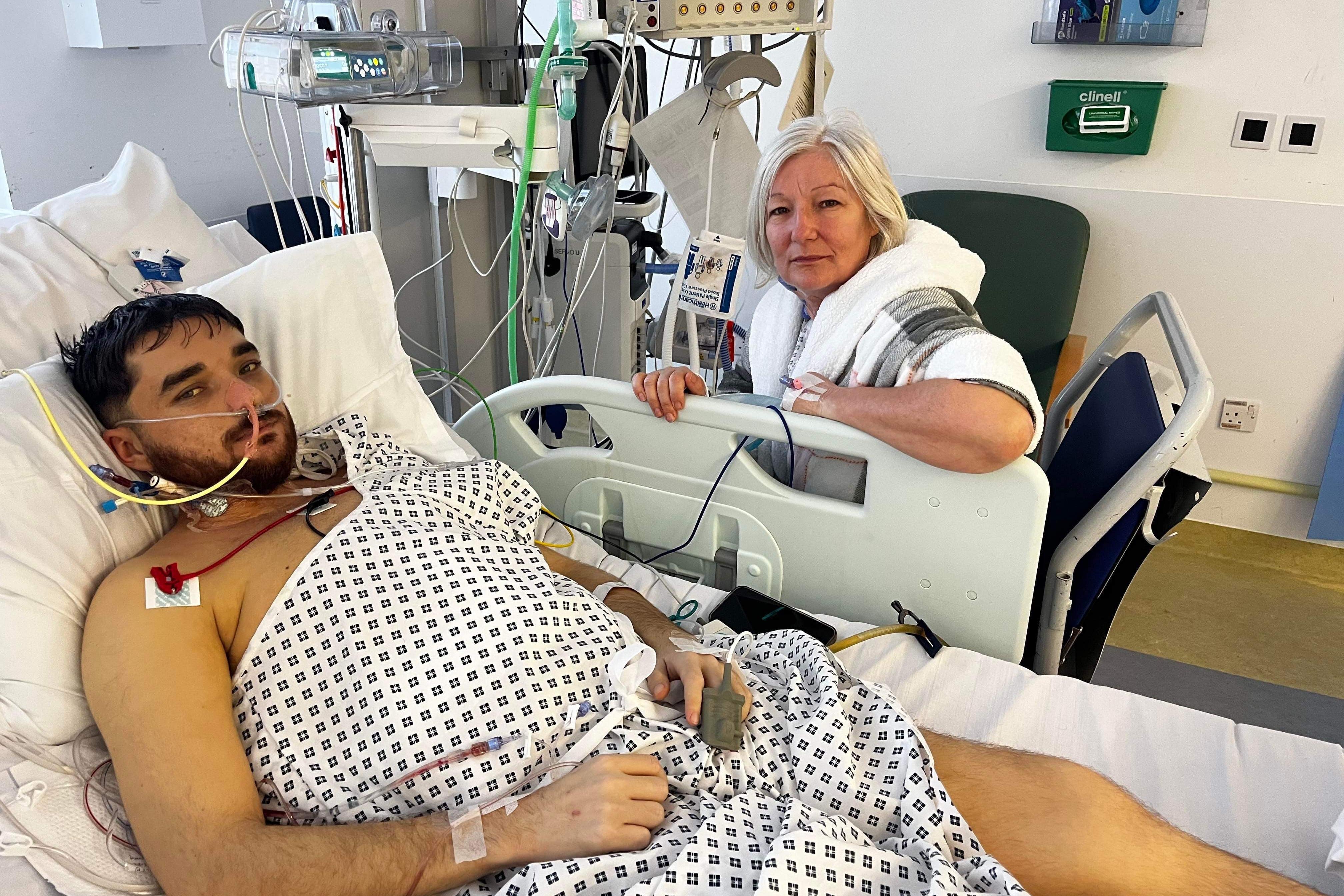Man given gift of life by mother thanks to live liver transplant
Connor Meyrick received 65% of his mother Michelle’s liver during a 12-hour operation at London’s Royal Free Hospital in March.

Your support helps us to tell the story
From reproductive rights to climate change to Big Tech, The Independent is on the ground when the story is developing. Whether it's investigating the financials of Elon Musk's pro-Trump PAC or producing our latest documentary, 'The A Word', which shines a light on the American women fighting for reproductive rights, we know how important it is to parse out the facts from the messaging.
At such a critical moment in US history, we need reporters on the ground. Your donation allows us to keep sending journalists to speak to both sides of the story.
The Independent is trusted by Americans across the entire political spectrum. And unlike many other quality news outlets, we choose not to lock Americans out of our reporting and analysis with paywalls. We believe quality journalism should be available to everyone, paid for by those who can afford it.
Your support makes all the difference.A man who missed out on a liver transplant six times was in seventh heaven when his mother was found to be a match and gave her son the gift of life.
Connor Meyrick received 65% of his mother Michelle’s liver during a 12-hour operation at the Royal Free Hospital (RFH) in north London in March.
The operation – which was the first live liver transplant to take place at the hospital in five years – has given the 27-year-old a new lust for life, and the pair are recovering at the family home in Swindon, Wiltshire.
Mr Meyrick said: “It feels amazing to be able to plan after so long and I’ve already booked tickets for a gig in Liverpool, seeing the comedian Jimmy Carr, and a trip to Newbury Races.
“Who knows, I might be able to finally go abroad again in the not too distant future!”
Mr Meyrick found out that he had been born with Caroli’s syndrome – a rare genetic disorder which can usually require a liver transplant to prevent fatal complications – at the age of 17, following hospital treatment for severe acne.
He was put on the transplant list three years ago and said that each time he missed out on a donor liver “it was extremely difficult to deal with”.
“As the years passed, the symptoms got worse,” he said.
“I was very fatigued, suffered from under-the-skin itching, crazy headaches, awful acne and, because I was jaundiced, my skin was very yellow.
“Also being on the list meant I always had to be within two hours from hospital so that meant no going away.
“That also affected my ability to do my engineering job so I had to go part-time and do desk work instead, until it got to the point where I couldn’t even go into work anymore.”
Ms Meyrick said she was “keen” to explore the option of a live liver transplant when it was suggested last September, as she had the same blood type as her son so was a suitable option.
“Frankly, I would have done anything for Connor,”, the 54-year-old, who works in HR, said.
“He was worried about putting me through a major operation and it was me that had to persuade him that this was the right thing for everyone and that if the shoe had been on the other foot I know he’d have done it for me.
“Knowing that I’ll be able to let him go off without worrying about how far he is from a hospital means everything.”
Both mother and son thanked the hospital and their respective surgeons, with Mr Meyrick saying: “I want to say thank you to my family, especially, of course, my mum.”
Mr Meyrick’s surgeon, Professor Joerg-Matthias Pollok, said: “I’m delighted we have been able to help Connor.
“There are many more logistics to consider for live liver donation as you always have to think of the potential major risks to the donor and do everything in your power to avoid these.
“But for patients like Connor the option for live liver donation should be there.”
Ms Meyrick plans to return to her job once she has fully recovered, and Mr Meyrick’s former liver – which due to his condition had swollen to more than double the average size – has been preserved, so it can be used as a university teaching tool.